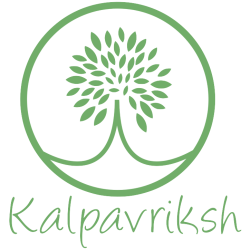By now, micro lending programmes across the country have shown convincingly that the poor are both prompt and reliable in repaying loans. Though the same loans taken under these programmes have helped borrowers increase their incomes somewhat, the micro enterprises started by them are hardly ever sustainable in covering the running costs and generating a bit of surplus. More and more practitioners are realizing that credit is not enough to tap the full economic potential of the micro enterprises sector. Access to markets, information on raw materials and technology, skill up gradation, design inputs and arrange of other business development services are equally significant in making micro enterprises more profitable and sustainable. Equally important is the proper identification of potential activities through a scientific and systematic process.
It is found from our experience that agency (NGOs) supporting Income generation efforts of self help groups shown that success rates are equally significant in making micro enterprises more profitable and sustainable enterprises are very low. This is because activities are selected primarily on the basis of the interest shown by the beneficiaries without keeping the market demand in mind. Inadequate identification of markets, diseconomies in scale of production, absence of business plans and market strategies and the lack of a business approach amongst NGOs are further reasons that contribute to low sustainability.
Keeping the above shortcoming in mind, we have developed KALPAVRIKSH’S 3M (Micro Finance, Micro Markets, Micro Planning,) model, which is a simple, systematic and realistic approach in micro enterprises development.
How we do it?
- A survey of local haats, village shops, traders and other marketing system will conduct to understand the demand pattern.
- The supply possibilities are ascertained by surveying the availability of different raw materials, skills, infrastructure, and support services in the villages.
- By analyzing the supply and demand in the area through a micro planning exercise, a scientific selection of activities is ensured.
- Simultaneously, entrepreneurs already pursuing these different activities will be interviewed at length to understand the problem they face.
- The Data gathered through the surveys is analyzed for preparing a detailed and practical implementation strategy for micro enterprises development.
- A Field Worker Handbook will be prepared by putting all information pertaining to the project village in one place to guide the staff indentifying, launching and supporting micro enterprises in their areas.
- The above model will be implemented in 500 Village in Kandhamal covering all 12 Blocks.
- Target: Women self Help group formed by different Departments, NGOs.
A team in each location for one year will be there to support and facilitate the creation of sustainable micro enterprises
Components:
- Survey
- Planning the survey
- conducting the field work for the techno-economic survey
- Village Profile
- Individual Entrepreneur Profile
- Conducting the field work for the haat survey
- How to do a haat survey
- Haat Profile
- Buyer profile
- Seller Profile
- Analysis
- Preparation for analysis
- Outputs of analysis
- Business plan
- Implementation Strategy
Phase1:- Selection of activities by group members
Phase2:- Launching and Management of activities
- Application of 3M in various projects
- Business Development
- Enterprise Promotion
- Livelihood Promotion
- Rural Provision Shop
- Micro Enterprises promotion mela
- Creation of new haat
- Business plan –vegetable growing
- Questionnaires
- Data –sheet
Insurance: We act as Nodal Agency of ICICI Prudential for Micro Insurance.


